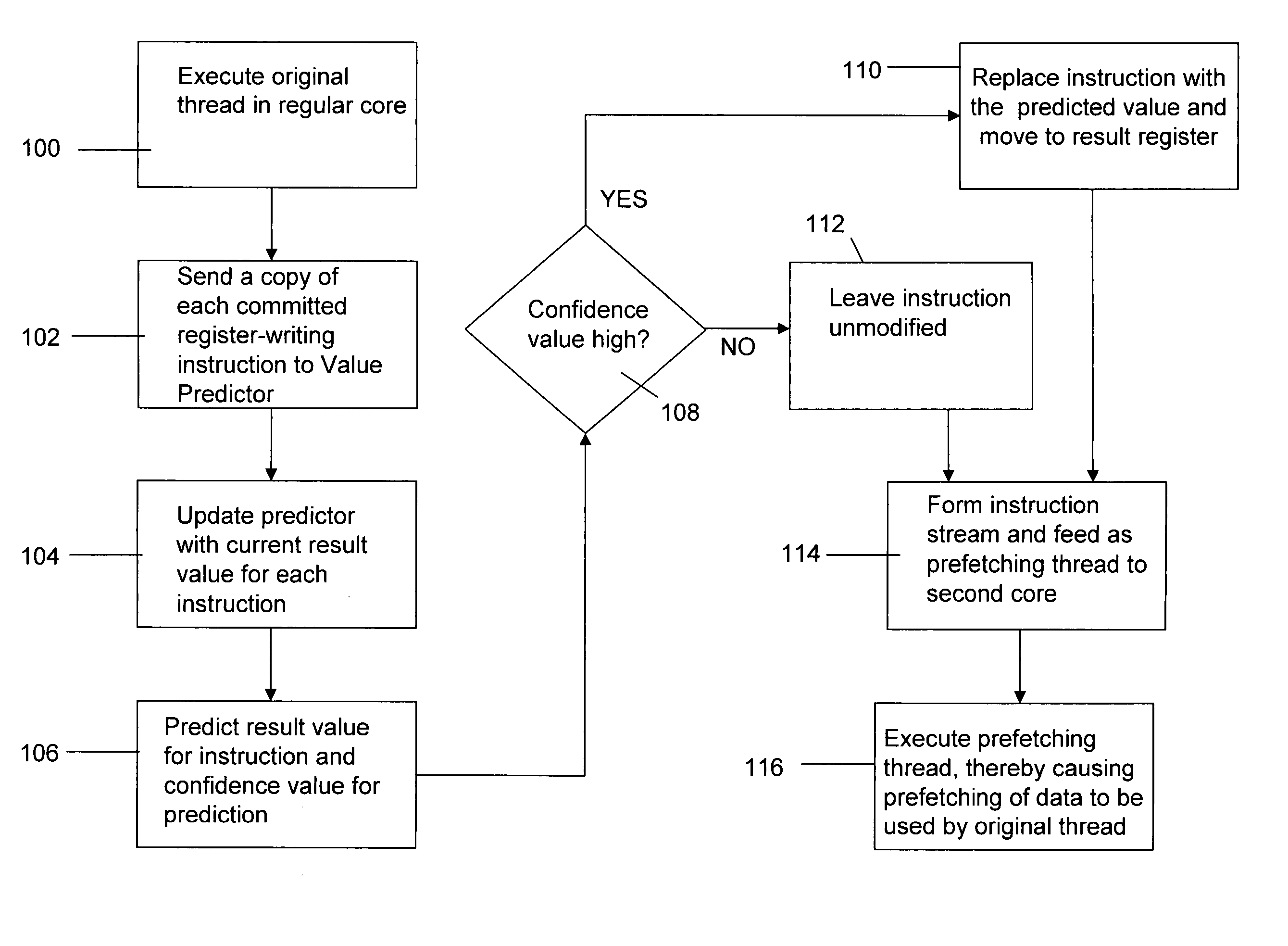Future execution prefetching technique and architecture
a technology of future execution and prefetching, applied in the field of future execution prefetching technique and architecture, can solve the problems of unpredictability of many important load addresses and cached data, and achieve the effects of increasing software complexity and cost, increasing contention, and improving the performance of individual computation threads
- Summary
- Abstract
- Description
- Claims
- Application Information
AI Technical Summary
Benefits of technology
Problems solved by technology
Method used
Image
Examples
Embodiment Construction
[0031] A detailed discussion of the implementation of the FE micro-architecture will be presented following a discussion of the quantitative analysis of the observations that inspired the present invention. One of the main program properties exploited by FE is that most load misses occur in “loops” with relatively short iterations. Note that any repetitively executed instruction is referred to as a “loop” instruction. The distance between the load instructions that cause an L2 cache miss and the previous execution of the same load instruction were evaluated. It was found from the quantitative analysis that on average from 70 to 80% of the misses occur in loops with iterations shorter than 1000 instructions. This observation suggests a prefetching approach in which each load instruction triggers a prefetch of the address that the same load is going to reference in the nth next iteration. Since in most cases the time between the execution of a load instruction and its next dynamic exe...
PUM
 Login to View More
Login to View More Abstract
Description
Claims
Application Information
 Login to View More
Login to View More - R&D
- Intellectual Property
- Life Sciences
- Materials
- Tech Scout
- Unparalleled Data Quality
- Higher Quality Content
- 60% Fewer Hallucinations
Browse by: Latest US Patents, China's latest patents, Technical Efficacy Thesaurus, Application Domain, Technology Topic, Popular Technical Reports.
© 2025 PatSnap. All rights reserved.Legal|Privacy policy|Modern Slavery Act Transparency Statement|Sitemap|About US| Contact US: help@patsnap.com



